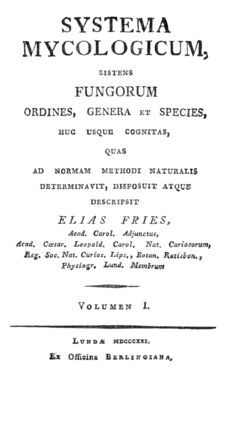
Systema Mycologicum is a systematic classification of fungi drawn up in 1821 by the Swedish mycologist and botanist Elias Fries. [1] It took 11 years to complete.

Systema Mycologicum is a systematic classification of fungi drawn up in 1821 by the Swedish mycologist and botanist Elias Fries. [1] It took 11 years to complete.

Elias Magnus Fries was a Swedish mycologist and botanist. He is sometimes called the "Linnaeus of Mycology".
Agyrium is a genus of saprophytic fungi in the family Agyriaceae. It probably evolved from a lichen ancestor, as it is closely related to many lichenized species of fungi.

Calocera is a fungal genus in the Dacrymycetes order. It is widely distributed and contains 15 species.
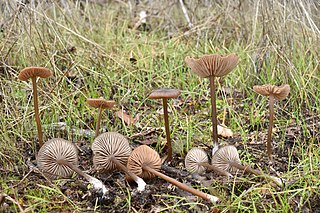
Nolanea is a genus of small gray to brown pink-spored mushrooms that are mostly saprotrophic and grow on the ground. The cap can be conical, convex or umbonate in shape, often with a silky top. The gills have adnexed to adnate attachment and the stalk is fragile and often hollow. The spores are angular and are flesh colored to pink. Nolaneas are well known for being difficult to identify.

The Tremellaceae are a family of fungi in the order Tremellales. The family is cosmopolitan and contains both teleomorphic and anamorphic species, most of the latter being yeasts. All teleomorphs in the Tremellaceae are parasites of other fungi, though the yeast states are widespread and not restricted to hosts. Basidiocarps, when produced, are gelatinous.

Scorias is a genus of fungi within the Capnodiaceae family. The genus was first described by Elias Magnus Fries in 1832. The fungus is known as sooty mould and is found growing on honeydew on leaves of many varieties of trees and plants.
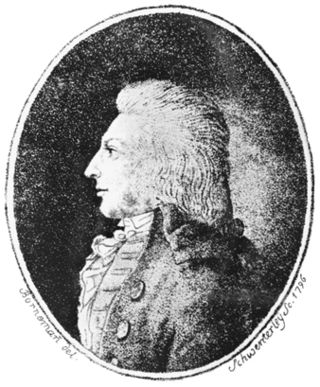
In mycology, a sanctioned name is a name that was adopted in certain works of Christiaan Hendrik Persoon or Elias Magnus Fries, which are considered major points in fungal taxonomy.
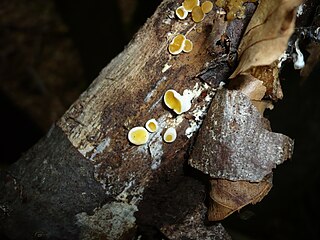
Ditiola is a genus of fungi within the family Dacrymycetaceae. The genus contains about 10 widely distributed species. Ditiola was circumscribed by Elias Fries in 1822.

Ramaria flaccida is a species of coral fungus in the family Gomphaceae. Originally described as Clavaria flaccida by Elias Fries in 1821, the species was transferred to Ramaria by Hubert Bourdot in 1898.

Cortinarius camphoratus, commonly known as the goatcheese webcap, is an agaric fungus in the family Cortinariaceae. The fungus is found in Europe and North America, where its fruit bodies (mushrooms) grow on the ground in a mycorrhizal association with spruce and firs in coniferous forests. Mushrooms are characterized by pale blue lilac colors when young, and a strong distinctive odor. Sources disagree as to the edibility of the mushroom, but they are generally not recommended for eating.

Tricholoma aestuans is a mushroom of the agaric genus Tricholoma. First described formally by Elias Magnus Fries in 1821, it was transferred to the genus Tricholoma by Claude Casimir Gillet in 1874.

Morchella deliciosa is a species of edible fungus in the family Morchellaceae. It was first described scientifically by Elias Magnus Fries in 1822. It is a European species, although the name has erroneously been applied to morphologically similar North American morels.

Cenococcum is a genus of two species of fungi in the family Gloniaceae.

Thaxterogaster pluvius is a species of fungus in the family Cortinariaceae.

Hygrophorus pudorinus, commonly known as the blushing waxycap or turpentine waxycap, is a species of fungus in the genus Hygrophorus.
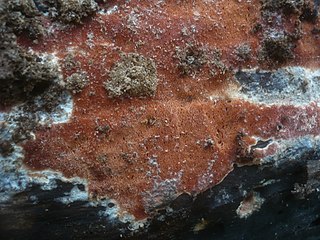
Ceriporia purpurea is a species of crust fungus in the family Irpicaceae. It was first described by Swedish mycologist Elias Magnus Fries in 1821 as Polyporus purpureus. Marinus Anton Donk gave the fungus its current name when he transferred it to the genus Ceriporia in 1971.
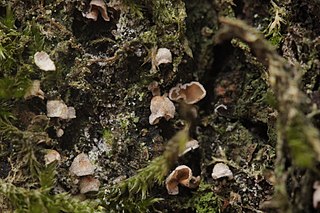
Chromocyphella muscicola is a fungus of the genus Chromocyphella. It is cup-shaped, with an upper surface covered with fine hairs and a smooth underside. The species reaches a diameter of about 4 mm across.
Lachnea is a genus of fungi belonging to the family Pyronemataceae. The genus was first described in 1822 as Peziza ser. Lachnea by Elias Magnus Fries. This was elevated to genus status by Claude Casimir Gillet in 1880.

Cookeina speciosa is a species of fungus in the family Sarcoscyphaceae.
Schizostoma laceratum is a fungus in the family Agaricaceae. It was first described in 1829 by Christian Gottfried Ehrenberg as Tulostoma laceratum, and transferred to the genus, Schizostoma, in 1846 by Joseph-Henri Léveillé.